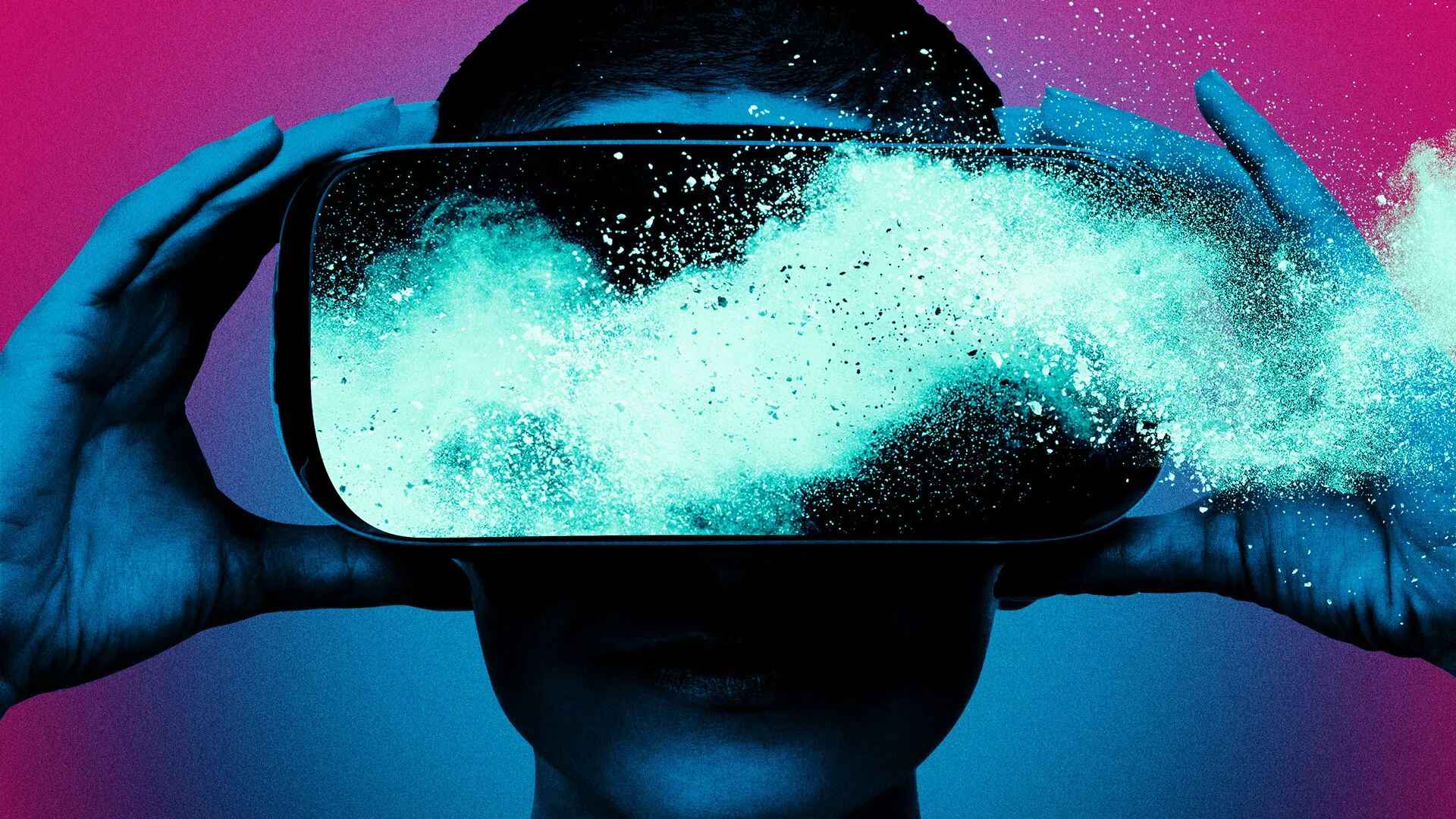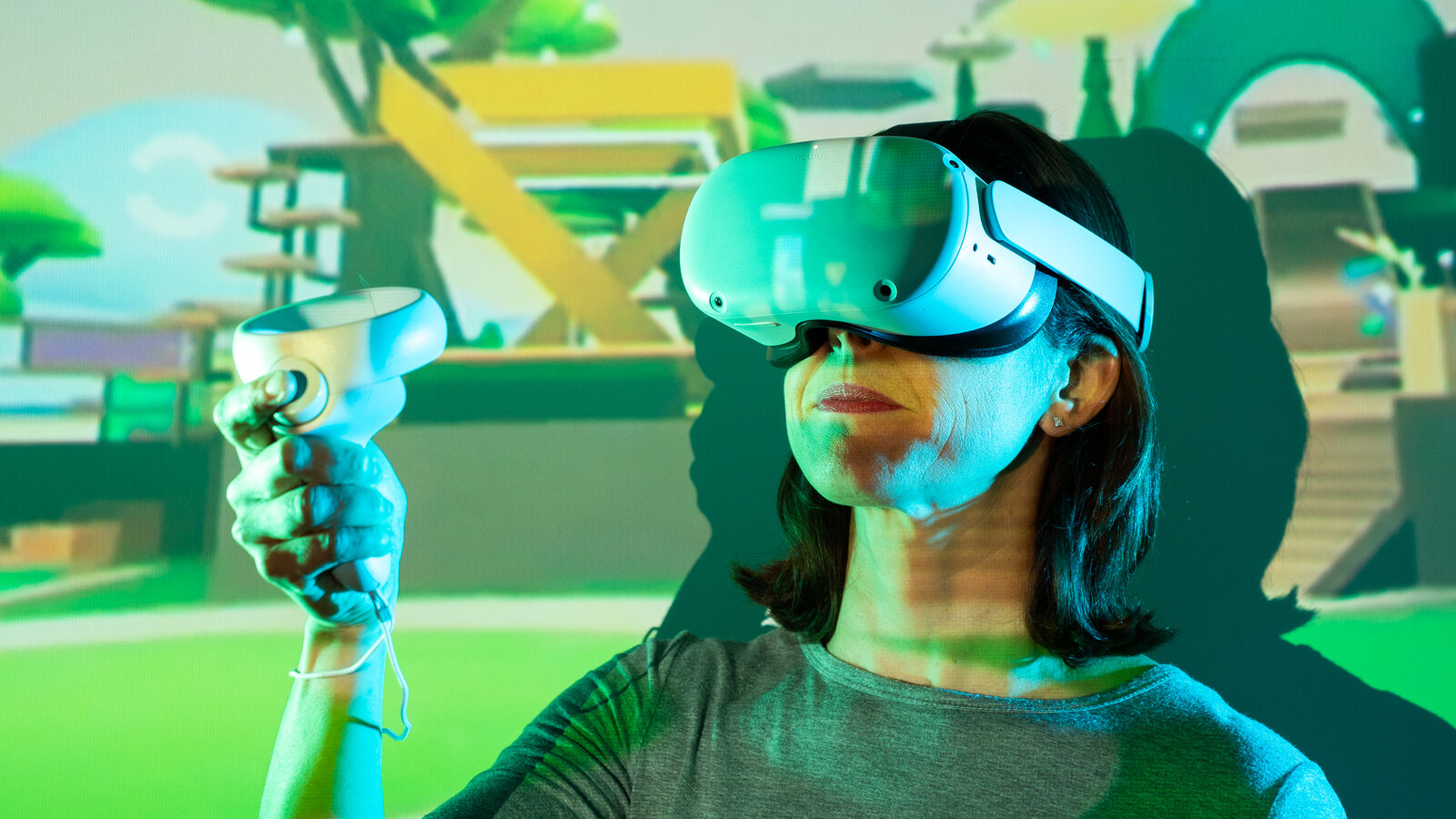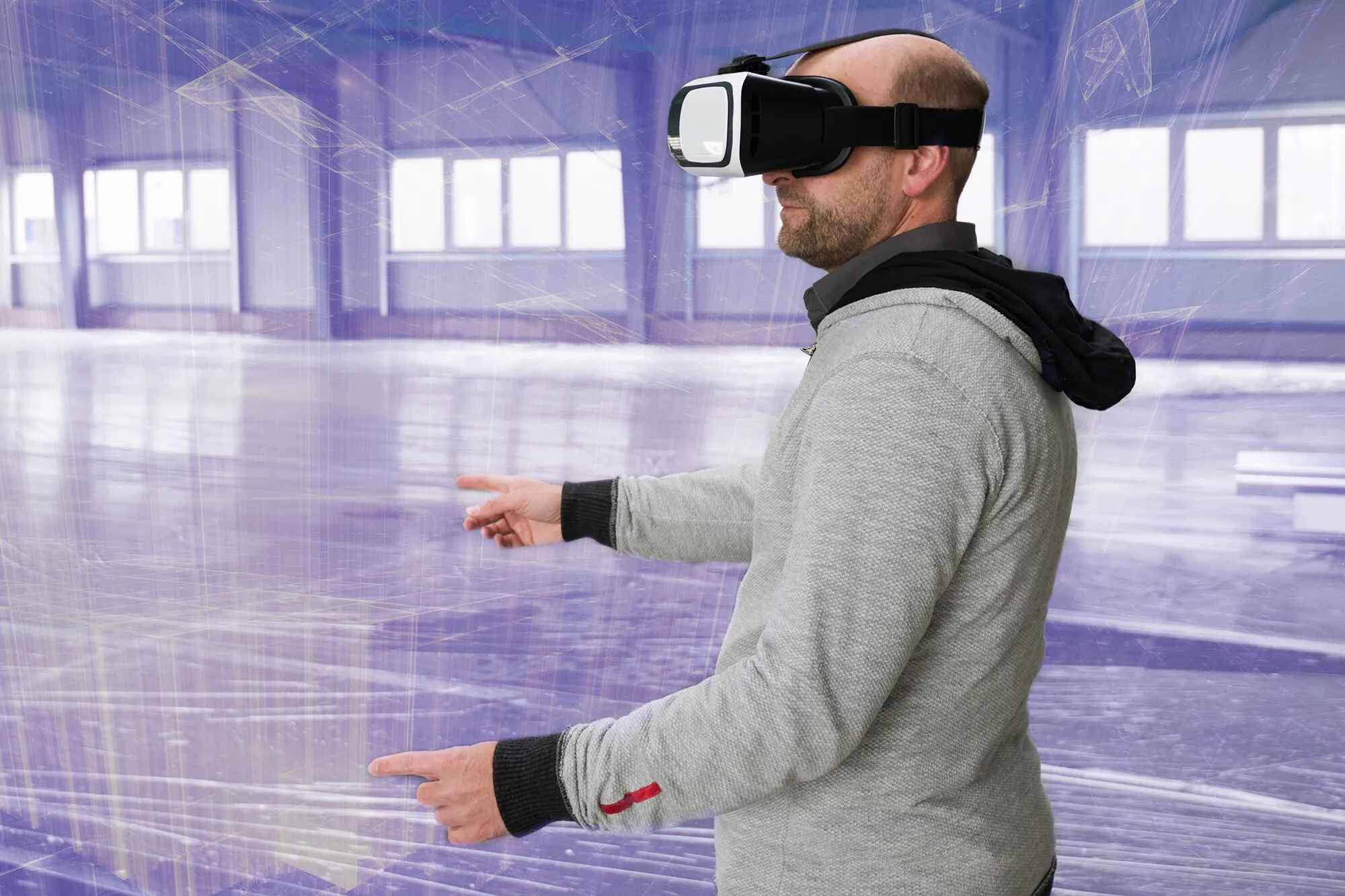Introduction
As technology continues to advance at a rapid pace, the concept of the metaverse has gained significant attention and buzz. The metaverse represents a virtual reality space where individuals can interact, socialize, and engage in various activities. It is a digital universe that offers limitless possibilities and has the potential to revolutionize how we live, work, and connect with others.
With the advent of immersive technologies such as virtual reality (VR), augmented reality (AR), and mixed reality (MR), the metaverse is becoming increasingly accessible and appealing. This virtual world allows users to create and customize their online identities, explore virtual realms, and even build and monetize their own digital assets.
Moreover, the metaverse has gained popularity through its depiction in popular culture, including movies such as “Ready Player One” and “The Matrix.” These portrayals have sparked the curiosity and imagination of people worldwide, fueling a desire to be part of this futuristic digital realm.
The metaverse is not just a gaming platform or a virtual world; it represents a convergence of technology, entertainment, and communication. It offers a seamless integration between the physical and digital worlds, blurring the boundaries and providing new avenues for personal and professional growth.
With the metaverse emerging as a potential new frontier, many questions arise, including how many people are currently part of this virtual universe and how the metaverse population is expected to grow in the future. In this article, we will explore these questions and delve into the factors influencing the metaverse’s population, as well as the impact it may have on society as a whole.
The Concept of the Metaverse
The metaverse is a term that was first coined by science fiction author Neal Stephenson in his 1992 novel “Snow Crash.” It refers to a virtual reality space where users can engage in various activities and interact with others in a simulated environment. The concept has since evolved and gained traction in the tech industry, capturing the imagination of both developers and enthusiasts alike.
At its core, the metaverse is an immersive digital universe that combines elements of virtual reality, augmented reality, and other advanced technologies. It serves as a platform for people to explore, create, and engage in a multitude of virtual experiences. Users can access the metaverse through a variety of devices, such as VR headsets, smartphones, and computers.
Unlike traditional online platforms or video games, the metaverse aims to provide a fully immersive and interactive experience. It offers a sense of presence, allowing users to feel as though they are truly present in the virtual world. This is achieved through advanced graphics, realistic physics simulations, and interactive social features.
In the metaverse, users have the ability to create and customize their own avatars, which serve as their digital representations in the virtual world. These avatars can be personalized to reflect the user’s unique identity, appearance, and style. Users can also interact with others through voice chat, text messaging, and even gestures, fostering a sense of social connection and collaboration.
One of the key aspects of the metaverse is its open and interconnected nature. It is not controlled by a single entity or corporation but rather is a collective creation of its users. This means that anyone can contribute to the development and expansion of the metaverse, whether it’s by creating virtual worlds, designing virtual objects, or programming interactive experiences.
The metaverse is not limited to gaming or entertainment; it has the potential to transform various industries, including education, healthcare, and commerce. For example, in the metaverse, students can attend virtual classrooms, doctors can perform surgeries using VR simulations, and businesses can host virtual conferences and exhibitions.
Overall, the metaverse represents a new frontier in digital experiences, offering a vast and interconnected virtual reality where people can explore, connect, and create. It is an exciting concept that holds the potential to reshape how we interact with technology and each other.
The Growing Popularity of the Metaverse
In recent years, the metaverse has witnessed a surge in popularity, capturing the attention of people from various walks of life. This growing interest can be attributed to several factors that have contributed to the rise of the metaverse as a mainstream concept.
One of the key drivers of the metaverse’s popularity is the advancements in technology. The development of more affordable and accessible virtual reality (VR) devices, such as the Oculus Rift and HTC Vive, has made immersive virtual experiences more attainable for a wider audience. Additionally, the increasing power of computer processors and graphics cards has enabled more realistic and immersive virtual worlds.
Furthermore, the COVID-19 pandemic has accelerated the adoption of remote work and virtual collaboration tools, which has indirectly fueled the interest in the metaverse. With people spending more time at home and seeking ways to connect with others digitally, the metaverse provides a unique and engaging platform for social interaction and entertainment.
The entertainment industry has also played a significant role in popularizing the metaverse. Movies, TV shows, and books that depict virtual worlds, such as “Ready Player One,” have generated widespread fascination with the concept. These fictional portrayals have sparked the imagination of people, paving the way for a broader acceptance and adoption of the metaverse.
Moreover, the rise of blockchain technology and cryptocurrencies has opened up new avenues for economic opportunities within the metaverse. Blockchain enables the ownership, trade, and exchange of digital assets, providing a decentralized and secure framework for virtual economies to flourish. This has led to the creation and monetization of unique digital assets, such as virtual real estate, virtual art, and virtual fashion, further attracting individuals to explore the metaverse.
Another factor contributing to the metaverse’s popularity is the sense of escapism and freedom it offers. In the metaverse, users have the ability to transcend the limitations of the physical world, experiment with new identities, and engage in activities that may not be feasible or safe in real life. This sense of liberation and exploration has captivated the imagination of individuals seeking exciting and immersive experiences.
Overall, the growing popularity of the metaverse can be attributed to a combination of technological advancements, cultural influences, economic opportunities, and the innate human desire for connection and escapism. As more people become aware of the possibilities offered by the metaverse, its appeal is expected to continue increasing in the years to come.
Factors Influencing the Metaverse Population
The metaverse population is influenced by various factors that shape the number of individuals who are actively participating and engaging in the virtual world. These factors can range from technological advancements to social and economic considerations. Understanding these influences can provide insight into the growth and dynamics of the metaverse population.
1. Technological Accessibility: The availability and affordability of virtual reality (VR) and other immersive technologies have a significant impact on the metaverse population. As VR devices become more accessible and user-friendly, more people can engage in virtual experiences, thereby increasing the metaverse’s population.
2. Internet Connectivity: A reliable and fast internet connection is essential for accessing and participating in the metaverse. The availability of high-speed internet in various regions can significantly affect the number of people who can join and contribute to the virtual world.
3. Education and Awareness: The level of education and awareness about the metaverse can influence the population. People who are more informed about the concept and its potential benefits are more likely to explore and be part of the metaverse.
4. Cultural and Societal Factors: Cultural and societal attitudes towards virtual worlds and immersive technologies can impact the metaverse population. Some cultures may embrace these digital experiences, while others may have reservations or constraints that limit participation.
5. Economic Opportunities: The presence of economic opportunities within the metaverse, such as virtual commerce and digital asset ownership, can attract individuals who see value in participating. The potential for financial gain and entrepreneurship can be a driving force behind the metaverse’s population growth.
6. Privacy and Security Concerns: Privacy and security concerns can affect people’s willingness to engage in the metaverse. As the metaverse becomes more prominent, ensuring data privacy and protecting against cybersecurity threats will play a crucial role in attracting and retaining users.
7. Social Integration and Networking: The ability to connect and interact with others in the metaverse is a significant factor in its population growth. Features such as social networks, multiplayer games, and virtual events contribute to building a sense of community and encourage individuals to be part of the metaverse.
8. Content and Experiences: The availability and diversity of content and experiences within the metaverse impact its population. Engaging and compelling virtual experiences, ranging from entertainment to education, attract users and contribute to the overall popularity of the virtual world.
By considering these factors, we can gain a better understanding of the dynamics and growth of the metaverse population. Continued advancements in technology, increasing awareness, and the evolution of the digital landscape will undoubtedly shape the size and composition of the metaverse moving forward.
How Many People are in the Metaverse?
Determining the exact number of people in the metaverse is challenging due to its decentralized and constantly evolving nature. Additionally, the metaverse encompasses various platforms, virtual worlds, and online communities, each with its own user base. Nevertheless, we can explore different estimations and insights to get a sense of the metaverse’s population.
One way to estimate the metaverse population is by considering the user base of popular virtual reality platforms and online games. As of now, platforms like VRChat, Rec Room, and Roblox have millions of active users, indicating a significant presence within the metaverse. However, it’s important to note that these figures represent only a portion of the overall metaverse population, as there are numerous other platforms and virtual worlds available.
Another approach to estimating the metaverse population is by considering the number of virtual reality headset sales. Companies like Oculus, HTC, and Sony have sold millions of VR headsets, suggesting a growing user base with access to immersive virtual experiences. However, not all owners of VR devices actively engage in the metaverse, so this estimation provides only a rough approximation.
Furthermore, the metaverse population extends beyond virtual reality and includes individuals who engage in online games, virtual conferences, digital art exhibitions, and various other virtual experiences. The global gaming community alone consists of billions of players, many of whom participate in virtual worlds and multiplayer games that align with the metaverse’s concept.
It’s also important to consider the regional and cultural variations in metaverse participation. While some regions may have a higher concentration of metaverse users, others may be slower in embracing these digital experiences due to cultural or technological constraints.
Overall, while it is difficult to provide an exact number, it is evident that the metaverse has a substantial and continuously growing population. As technology becomes more accessible, awareness increases, and virtual experiences become more immersive and enticing, the metaverse is expected to attract even more individuals, resulting in an ever-expanding virtual community.
Estimations and Predictions
As the metaverse continues to gain popularity and evolve, various estimations and predictions have been made regarding its future growth and population. While these projections may vary, they provide valuable insights into the potential trajectory of the metaverse.
Some industry experts predict that the metaverse population could reach billions of users in the coming years. With advancements in technology, increased internet connectivity, and a growing interest in virtual experiences, the metaverse has the potential to become a mainstream digital space that attracts a large and diverse population.
As virtual reality headsets become more affordable, user-friendly, and widely adopted, the accessibility to the metaverse is expected to increase. This, combined with the growing popularity of online gaming and virtual social platforms, suggests that the metaverse population could experience significant growth in the near future.
Furthermore, the emergence of blockchain technology and non-fungible tokens (NFTs) has introduced new economic opportunities within the metaverse. The ability to own and trade digital assets, such as virtual land, artwork, and virtual fashion, has drawn attention from investors and creators alike. This economic potential is likely to attract more users and contribute to the growth of the metaverse population.
Additionally, the metaverse’s potential to revolutionize various industries, including education, healthcare, and entertainment, further supports the notion of an expanding population. As more sectors adopt virtual experiences and integrate them into their services, the metaverse’s appeal will likely broaden, attracting new users from diverse backgrounds.
It’s also important to consider the impact of emerging technologies that could enhance the metaverse experience. Advancements such as haptic feedback systems, brain-computer interfaces, and improved gesture recognition may further enhance the immersion and attract individuals who seek more realistic and engaging virtual experiences.
While these estimations and predictions provide insights into the future growth of the metaverse, it is essential to acknowledge the uncertainties and challenges that may arise. Factors such as privacy concerns, technological limitations, and societal dynamics can influence the adoption and expansion of the metaverse population.
Overall, while precise estimations are difficult, the metaverse is poised to experience significant growth in the coming years. With advancements in technology, increased awareness, and the allure of immersive virtual experiences, the metaverse has the potential to become a thriving digital community with a substantial and diverse population.
The Demographics of the Metaverse Population
The metaverse population is diverse and encompasses individuals from various demographics. While it is difficult to provide precise demographic data, we can gather insights based on available information and trends within the virtual world.
Age is one of the key demographic factors in the metaverse population. While the initial perception might be that the metaverse is predominantly populated by younger generations, there is a growing presence of users across different age groups. Younger individuals who grew up surrounded by digital technologies are naturally drawn to the metaverse, but older demographics are also increasingly embracing the concept for entertainment, social interaction, and even professional purposes.
Gender representation in the metaverse is also significant. While historically, the gaming community and virtual worlds have been seen as male-dominated, there has been a significant shift in recent years. More women are participating in the metaverse, whether it be through gaming, virtual art, or social platforms, contributing to a more diverse user base.
The geographic distribution of the metaverse population varies depending on factors such as internet connectivity, cultural attitudes, and technological adoption. Regions with higher levels of internet access and infrastructure tend to have a larger metaverse population. However, as technology becomes more widespread, the metaverse is expected to attract users globally, bridging geographical boundaries and creating a global virtual community.
Socioeconomic factors also play a role in the metaverse population. While virtual reality devices and immersive technologies are becoming more affordable, they still present a financial barrier for some individuals. Additionally, access to high-speed internet and computing power can be limited in certain socioeconomic contexts. These disparities can influence the demographics of the metaverse population, with greater representation from individuals with higher disposable incomes or access to advanced technology.
Furthermore, the metaverse population is characterized by its diversity in interests, professions, and backgrounds. The metaverse appeals to individuals from various industries, such as artists, developers, entrepreneurs, educators, and more. It provides a platform for people to showcase their talents, collaborate on projects, and experiment with new digital experiences.
As the metaverse continues to grow and evolve, it is expected that the demographics of its population will become even more diverse. Advancements in technology, increased accessibility, and changing cultural attitudes will likely lead to a broader representation of individuals from different age groups, genders, and regions, contributing to a rich and varied virtual community.
Impact of the Metaverse Population on Society
The growing metaverse population has the potential to have a significant impact on society, influencing various aspects of our lives and shaping the way we interact, work, and entertain ourselves. Let’s explore some of the key impacts that the metaverse population can have on society.
1. Social Connection and Interaction: The metaverse provides a platform for people to connect and interact with others in a virtual space. This can be particularly valuable for individuals who may have limited social opportunities in the physical world. The metaverse fosters social engagement, community building, and the formation of relationships that transcend geographical barriers.
2. Economic Opportunities: The metaverse presents new avenues for economic growth and entrepreneurship. Individuals can monetize their skills, creativity, and digital assets within the virtual world. This can open up opportunities for artists, content creators, developers, and entrepreneurs to thrive in a digital economy, potentially creating new jobs and industries.
3. Education and Learning: The metaverse has the potential to revolutionize education by offering immersive and interactive learning experiences. Virtual classrooms, interactive simulations, and collaborative learning environments can enhance engagement and provide access to education for individuals worldwide. This can democratize education and bridge the gap between different regions and socioeconomic backgrounds.
4. Cultural Exchange and Expression: The metaverse serves as a platform for cultural exchange, artistic expression, and creativity. It enables individuals to showcase their unique cultural heritage, artistic talents, and diverse perspectives. This promotes cultural understanding, encourages creativity, and celebrates diversity in a global virtual community.
5. Environmental Impact: The metaverse can have a positive environmental impact by reducing the need for physical travel and infrastructure. Virtual conferences, meetings, and events can replace traditional in-person gatherings, leading to reduced carbon emissions and resource consumption. This contributes to a more sustainable and environmentally friendly society.
6. Health and Well-being: The metaverse can have a positive impact on mental health and well-being. It provides an outlet for creativity, self-expression, and entertainment, allowing individuals to relax, decompress, and engage in virtual experiences that promote happiness and personal growth. Additionally, virtual therapy and support groups can provide accessible mental health resources.
7. Ethical Considerations: The growing metaverse population raises important ethical considerations, such as data privacy, virtual identity, and digital rights. Society will need to address these issues to ensure a safe and secure virtual environment that respects individuals’ rights and protects their personal information.
Overall, the metaverse population has the potential to shape society by transforming how we socialize, work, learn, and express ourselves. It offers opportunities for connection, economic growth, cultural exchange, and innovation. As the metaverse continues to evolve, it is essential to be mindful of the potential challenges and work towards creating an inclusive, ethical, and equitable virtual world.
Conclusion
The metaverse, a virtual reality space where individuals can interact, socialize, and engage in various activities, is a concept that is gaining significant popularity and attention. With advancements in technology, increased accessibility, and growing interest in immersive experiences, the metaverse population is expected to continue expanding rapidly.
The concept of the metaverse, initially popularized in science fiction, has now become a tangible and increasingly accessible virtual realm. As virtual reality devices become more affordable and immersive, and as the demand for digital experiences grows, the metaverse has the potential to become an integral part of our lives, augmenting the physical world with limitless possibilities.
The metaverse population is diverse, encompassing individuals from different age groups, genders, and regions. While the exact number of people in the metaverse is difficult to determine, the adoption of virtual reality devices, the growth of online gaming communities, and the emergence of virtual social platforms all indicate a substantial and continually expanding user base.
The metaverse offers numerous benefits and impacts on society. It fosters social connection, provides economic opportunities, revolutionizes education, facilitates cultural exchange, and promotes a sustainable and immersive digital environment. However, it also presents challenges and ethical considerations that need to be addressed, including data privacy, virtual identity, and digital rights.
As the metaverse continues to evolve, it is essential to ensure inclusivity, accessibility, and ethical practices. By harnessing the potential of the metaverse and navigating these challenges, we can shape a virtual world that enhances our lives, promotes creativity and innovation, and fosters a sense of community and connection.
As we embark on this exciting journey into the metaverse, it is crucial to embrace its transformative power responsibly and collaboratively. The metaverse represents a new frontier, and by charting a course that balances technological advancements, social considerations, and ethical standards, we can unlock the full potential of this digital universe.

























